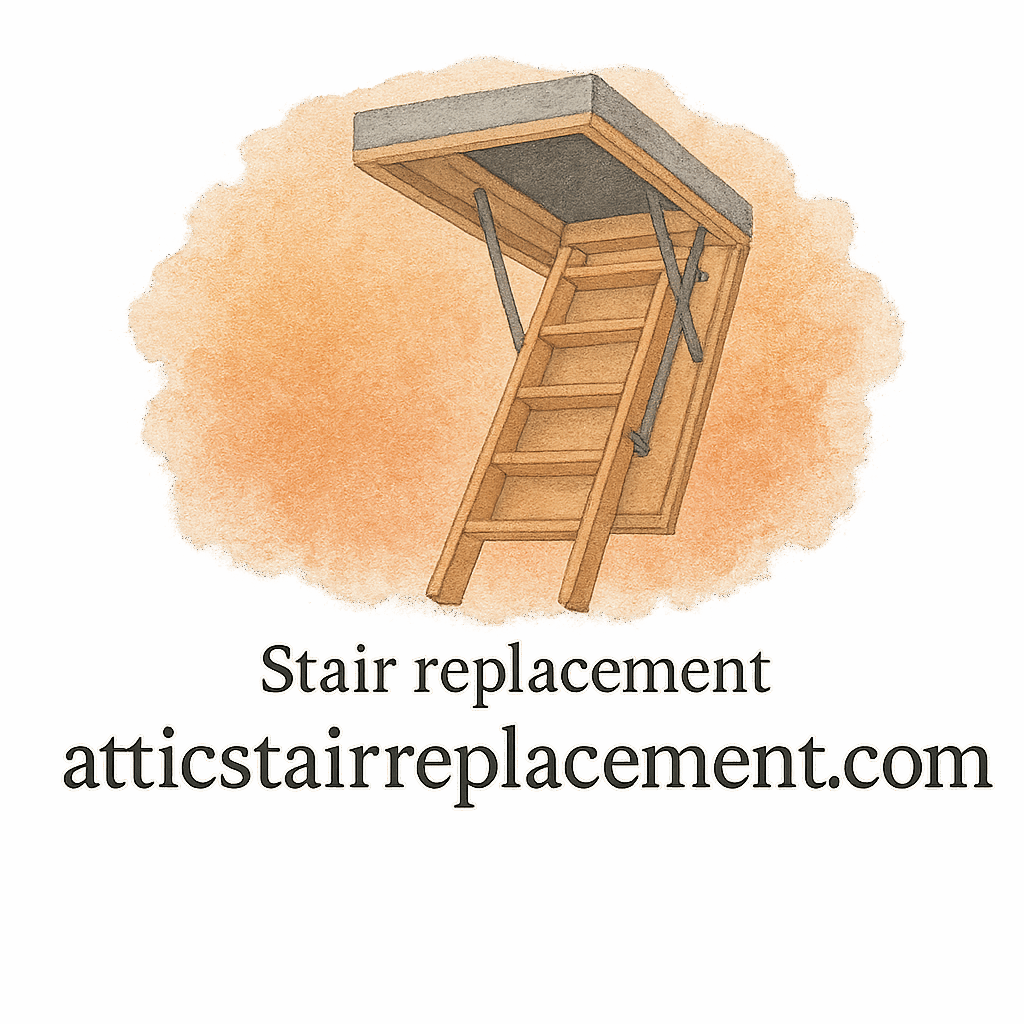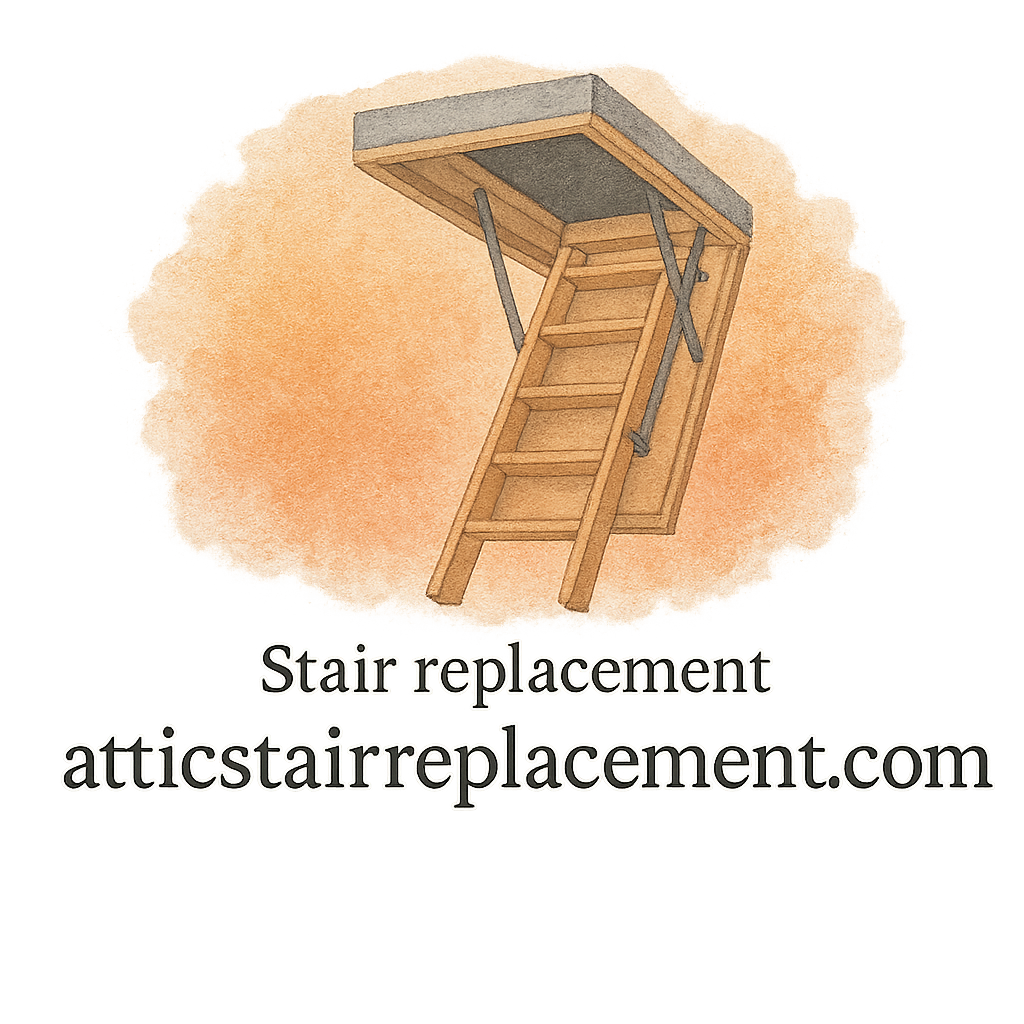Introduction: Why Attic Stair Replacement Safety Matters
Attic stair replacement might look like just another home project, but let’s be honest—it’s a task that comes with real safety risks. A wobbly ladder, loose screws, or poor installation can lead to injuries that you definitely don’t want to deal with. Whether you’re taking the DIY installation route or hiring a contractor, understanding safety is non-negotiable. Think of it like replacing the brakes on your car—you wouldn’t cut corners there, so why risk it with attic stairs?
In this guide, we’ll walk you through 10 essential safety rules every homeowner should follow when replacing attic stairs. Not only will these tips help you avoid accidents, but they’ll also ensure your new attic stairs last longer and perform better.
Rule #1: Inspect the Existing Attic Stair Before Starting
Spotting signs of wear and damage
Before you even think about tearing out the old stairs, take a good look at what you’re working with. Look for cracks, loose hinges, splintered wood, or bent metal. These are warning signs that tell you the structure is unsafe.
Hidden risks you might overlook
Sometimes, the real danger isn’t obvious. Termite damage, rust inside joints, or warped frames can all compromise the stairs. Catching these early helps you plan the replacement process more safely.
Rule #2: Choose the Right Replacement Attic Stairs
Material matters: wood vs. aluminum vs. steel
Not all attic stairs are created equal. Wooden stairs are classic but can wear out faster, aluminum offers lightweight durability, and steel provides heavy-duty strength. Choose based on your attic use and weight needs.
Match the weight capacity with your needs
This is a big one—don’t underestimate how much weight your attic stairs need to support. Between carrying boxes and your own weight, you’ll want a model with a heavy-duty rating that matches your household needs.
👉 For detailed product reviews, check out Attic Stair Replacement reviews.
Rule #3: Gather Proper Tools and Safety Gear
Essential tools for attic stair replacement
Think drills, screwdrivers, wrenches, measuring tape, and a level. Having the right tools on hand keeps the project running smoothly and reduces the risk of mistakes.
Must-have personal protective equipment (PPE)
Safety glasses, work gloves, and a sturdy step ladder are non-negotiable. If you’re working with power tools, hearing protection is also a smart move.
Rule #4: Follow Manufacturer Instructions Closely
Why skipping steps is a costly mistake
It’s tempting to wing it, but skipping instructions can leave you with misaligned stairs, loose hardware, or worse—a dangerous setup.
Reading labels and manuals thoroughly
Spend an extra 15 minutes reading the manual. Trust me, it’s worth it. Manufacturers include safety guidelines for a reason.

Rule #5: Secure the Work Area
Clearing the space below and above
Make sure there’s nothing in your way—furniture, storage boxes, or clutter. You’ll need a clear workspace for safe removal and installation.
Warning family members and pets
The last thing you want is your dog wandering underneath when you’re removing heavy stair parts. Rope off the area and keep everyone clear.
Rule #6: Get a Helping Hand
Why attic stair replacement isn’t always a one-person job
Attic stairs are bulky, awkward, and heavy. Trying to handle them alone is asking for trouble. Having an extra pair of hands makes the process safer and quicker.
When to call a professional contractor
If the installation feels overwhelming or the stairs seem too complex, hiring a contractor might be the smartest move. Expert advice can save you from costly mistakes.
Rule #7: Ensure Proper Measurements Before Installation
Avoiding costly sizing mistakes
One of the biggest DIY mistakes is buying stairs that don’t fit. Measure the ceiling opening, floor-to-ceiling height, and attic clearance before purchasing.
The role of accurate measuring in safety
Poor measurements can lead to gaps, instability, or dangerous angles. A tape measure is your best friend here.
Rule #8: Test Stability Before Full Use
First climb checks
After installation, don’t immediately start hauling boxes upstairs. Test the stairs with your body weight first to make sure everything feels solid.
Load testing safely
Gradually add weight—bags, boxes, or even a helper—to test capacity. This ensures the stair is safe for everyday use.
Rule #9: Regular Maintenance After Replacement
Cleaning and lubricating moving parts
Dust, dirt, and grime can wear down your attic stair joints. Regular cleaning and lubrication keep the mechanism smooth.
Preventing wear and prolonging lifespan
A little care goes a long way. For more guidance, see attic stair maintenance and repair tips.
Rule #10: Know When to Replace Again
Warning signs of another replacement
Creaking, wobbling, or visible cracks are signs it’s time for another swap. Don’t ignore them.
Why durability isn’t forever
Even the most durable models have a lifespan. Staying alert to warning signs prevents accidents.
Common Mistakes to Avoid in Attic Stair Replacement
Skipping measurements, rushing installation, or using the wrong tools are mistakes that can cost you big time. And let’s not forget ignoring weight limits—that’s a recipe for disaster.
DIY vs. Hiring a Professional: Which is Safer?
If you’re confident with tools, DIY attic stair installation can be a rewarding home project. But if you’re unsure, hiring a professional contractor ensures quality, safety, and peace of mind.
Check out the pros and cons of each at DIY installation.
Cost Considerations and Hidden Risks
Attic stair replacement costs vary, but don’t just look at the sticker price. Watch out for hidden costs like structural adjustments or finishing work. Planning ahead helps you stay within your budget.
Final Tips for a Safer Home Improvement Project
Stay patient, use the right tools, and never cut corners. Whether you’re doing a quick renovation or a full remodel, safety always comes first.
For more guides, check out the Attic Stair Replacement Home Improvement hub.
Conclusion
Replacing attic stairs may not seem like a high-risk project, but if you ignore safety rules, things can go south fast. By following these 10 essential safety rules, you’ll protect yourself, your family, and your home investment. Remember, safe installation today means fewer headaches tomorrow.
FAQs
1. How often should attic stairs be replaced?
On average, attic stairs last 10–15 years, depending on usage and maintenance.
2. Can I replace attic stairs on my own?
Yes, but only if you’re confident with tools. Otherwise, hire a contractor for safety.
3. What’s the safest attic stair material?
Steel and aluminum are considered the most durable and safe for heavy use.
4. How much does attic stair replacement cost?
It can range from $300 to $800 depending on type, materials, and labor. Watch for hidden costs.
5. How do I maintain attic stairs after installation?
Regular cleaning, lubrication, and checking for loose bolts are essential.
6. What are the biggest mistakes in attic stair replacement?
Poor measurements, skipping instructions, and ignoring weight limits.
7. Can attic stairs handle heavy storage loads?
Yes, but only if you select a heavy-duty model rated for the weight you plan to carry.


